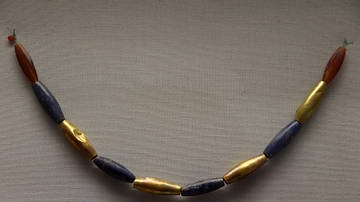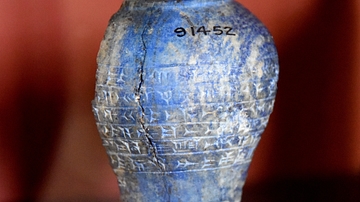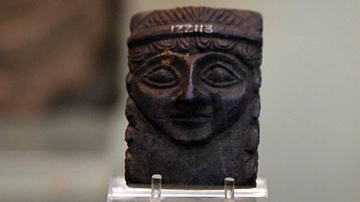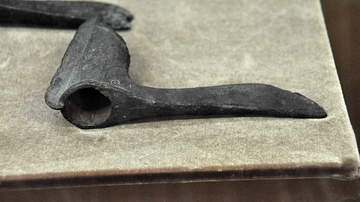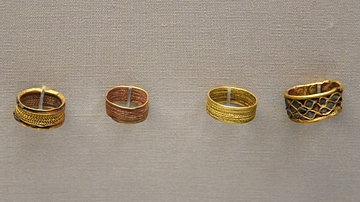Illustration
The lapis lazuli discs were carved and polished. They have two perforations through their diameter. They display a flat surface and a grooved circumflex. Each disc is surrounded by a single hammered gold ring with eight perforations. These might well have been attached to material, clothing, or perhaps the fringe of a canopy. Early Dynastic Period, circa 2600 BCE. From the Royal Cemetery at Ur, Southern Mesopotamia, modern-day Iraq. Part of objects allotted to the British Museum from Ur excavation season 1927-1928 CE. (The British Museum, London).
About the Author
Cite This Work
APA Style
Amin, O. S. M. (2018, February 21). Lapis Lazuli Discs with Gold Rings from Ur. World History Encyclopedia. Retrieved from https://www.worldhistory.org/image/8119/lapis-lazuli-discs-with-gold-rings-from-ur/
Chicago Style
Amin, Osama Shukir Muhammed. "Lapis Lazuli Discs with Gold Rings from Ur." World History Encyclopedia. Last modified February 21, 2018. https://www.worldhistory.org/image/8119/lapis-lazuli-discs-with-gold-rings-from-ur/.
MLA Style
Amin, Osama Shukir Muhammed. "Lapis Lazuli Discs with Gold Rings from Ur." World History Encyclopedia. World History Encyclopedia, 21 Feb 2018, https://www.worldhistory.org/image/8119/lapis-lazuli-discs-with-gold-rings-from-ur/. Web. 21 Apr 2025.



